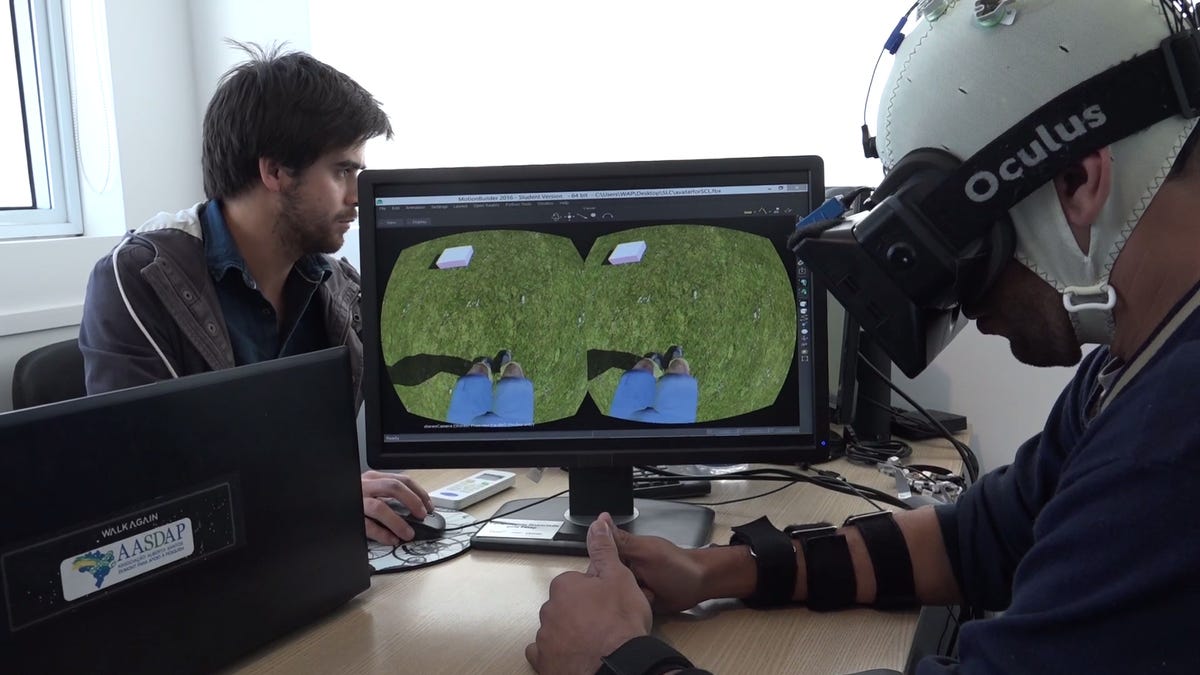VR and exoskeletons restore feeling to paraplegics
Eight people paralysed from spinal cord injuries have regained partial sensation and muscle control in their legs.
We've only just begun to tap the potential of virtual reality and brain-machine interfaces, but already they're making waves in some unexpected areas. One of those is physical rehabilitation -- treating people with injury-related paraplegia.
We've seen a few examples of them being used, such as the paralysed man who used VR and electroencephalography to walk on his own legs without the use of an exoskeleton. Now, researchers from Duke University, led by neuroscientist Miguel Nicolelis, have achieved success with eight patients.
Using virtual reality and a robotic exoskeleton controlled by the patient's neural activity, the Walk Again Project has seen these patients regain some sensation and muscle control in their legs.
"We couldn't have predicted this surprising clinical outcome when we began the project," Nicolelis said in a statement.
"What we're showing in this paper is that patients who used a brain-machine interface for a long period of time experienced improvements in motor behaviour, tactile sensations and visceral functions below the level of the spinal cord injury. Until now, nobody has seen recovery of these functions in a patient so many years after being diagnosed with complete paralysis."
The virtual reality allowed the patients to learn how to control the exoskeleton. The electrical signals specific to thinking about walking can be read using a non-invasive EEG electrode cap, but it's not as simple as it sounds. Everyone's brain works differently, with neural activity a sort of fingerprint.
To program the controls the patients were fitted with the cap, then had to learn to control an avatar of themselves walking in a virtual environment. The researchers could then generate a specific set of commands for the exoskeleton based on the activity of an individual patient's brain, while the patient practised finessing the sort of control they would need for the exoskeleton.
As part of this process, the patients graduated from full virtual reality to harnesses and exoskeletons that also required them to exert more control over their arms, their posture and their balance.
After seven months, some of the patients saw changes. After a year, four saw significant enough changes that their conditions could be reclassified from complete paralysis to partial paralysis. Most of the patients had improved control over their bladder and bowel function.
The most dramatic improvement was a 32-year-old woman who had been paralysed for 13 years after a car accident. Unable to stand at the beginning, by the end she was able to move her own legs voluntarily, and was standing and walking with the aid of a walker, braces and a therapist.
The patients have now been receiving therapy through the Walk Again Project for over two years, and will continue to do so, with the team documenting their progress. Nicolelis and his colleagues will also be commencing a new trial with patients who have been injured more recently to see if faster intervention has an effect on the results.


